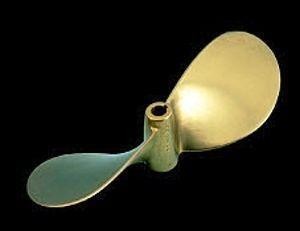I was thinking impossible in my heavy H41, we raced for 65 mi offshore on a broad reach and the wind began to pick up,up, up until gusts hit 30, after a few hours racing above 9 knots, and 3 very hard scream from my wife we take a reef, was almost impossible no to go to wind when a big wave hit us combined with a wind gusts, we lost the 10 hours race by 12 minutes. I think the max speed of a h41 is around 8.2? On the race was running a 29 foot corsair, he made de 65m in less that 5:30!!!! Thats above 12 knots. I manage to do 9:45. I have a fixed prop very bad for sailing.
going over hull speed h41 regatta
- Thread starter Valerio
- Start date
Why not?Don't get too caught up in the theoretical hull speed concept as a performance standard.
Keep in mind though, Hull Speed is a term with a very specific meaning. It expresses an idea for optimal speed through the water for energy put into the system based upon waterline length. It is not intended to express a limit or even be particularly accurate except as a base-standard.
When sailing, different boat designs do different things to that waterline length. For example: boats with a lot of overhang often experience a lengthening of their waterline as they heel. This effectively changes the optimal hull speed while reaching. A boat with a waterline length of, say, 36 feet will have a hull speed of 8.04 knots (HS = 1.34 x √36). However, if the overall length is 42', the effective waterline length when reaching could be as much as 40'. Then, the effective hull speed is about 8.45 knots.
This is the wave speed of the wake generated by the hull when the wave's length is 36 feet or 40 feet respectively. As you push the hull faster than this speed, the wave length increases such that you are trying to sail up the bow wave with no counter balance from the stern wave aiding in lifting the stern. Larger boats are often built with a bulb on the bow below the waterline. This has the effect of pushing a column of water ahead and can artificially lengthen the waterline length thus improving on the hull speed number.
What's important is to remember this standard refers to speed through the water, not speed over the ground. However, it works quite well as a baseline for comparing the efficient performance of your sail trim.
-Will (Dragonfly)
Last edited:
Isn't the engineering and scientific aspects of modern boat building amazing? Theoretical hull speed ? Remember when narrow beamed boats were considered the standard? Take the Bristol 32.. 32'4" overall and only 22 feet of waterline ! Lots of overhang fore and aft and with about 9.5' of beam. The theoretical hull speed is a mere 6.28 kts AT the waterline.. Factor in the parabolic arc of the heeled hull and that number rises.. Fast forward to new construction.. Wave tank testing and CAD systems combined to produced boats with vertical cut waters ( bows) and hulls that hold the beam from it's widest point to the transom... the J 32 compared to that Bristol: 32.5' overall with waterline of almost 29' and a full foot and a half MORE beam...You can't change the laws of physics BUT you can make them work for you !
Well, there you go... y'all must remember that the "theoretical hull speed" formula has been around for a long time.. boat designers used it during the age of steam to determine optimal engine size for commercial haulers with deep draft full displacement hulls. They wanted to maximize cargo space and minimize fuel needed to support the much larger engine needed to surpass the theoretical hull speed.
To this day, matching auxiliary engine size to a boat based on this theory is not uncommon... especially in the full displacement cruising yacht genre. But as everyone knows.... yacht design is constantly evolving and full displacement hulls are less common today than in the past. In fact, there are many semi planning and full planning hulls on sailboats today.... from the planning dinghies such as the laser and 49'er to the Transpac "sleds" that essentially surf all the way to Hawaii.
I am just suggesting the theoretical hull speed concept be kept in perspective to its intended application.
To this day, matching auxiliary engine size to a boat based on this theory is not uncommon... especially in the full displacement cruising yacht genre. But as everyone knows.... yacht design is constantly evolving and full displacement hulls are less common today than in the past. In fact, there are many semi planning and full planning hulls on sailboats today.... from the planning dinghies such as the laser and 49'er to the Transpac "sleds" that essentially surf all the way to Hawaii.
I am just suggesting the theoretical hull speed concept be kept in perspective to its intended application.
Hunter props, shafts, struts, and cutless bearingsAnd now a word from the sponsor...

See the product
